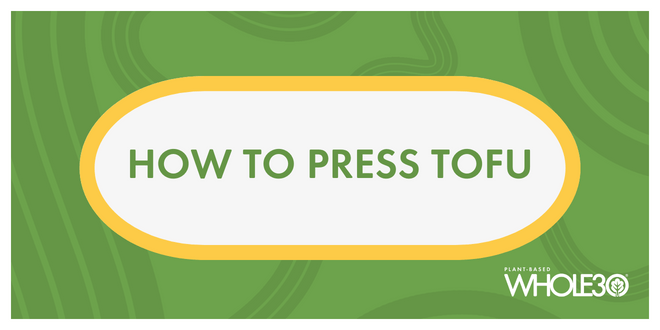Don’t skip over the pressing tofu step when reading recipe directions. It may seem extra, but this process is key to making the best tofu dishes. That’s because this step allows flavors to absorb, making your meals even more delicious.
And it’s an easy process you can do with a heavy object or a tofu press. When you’re pressing with heavy objects, it takes a little longer—but it’s simple for every kitchen. A press is a much quicker option and works just as well. But you might not have one hidden in a kitchen drawer.
This post will teach you exactly how to remove water from your tofu—both ways. That will set you up to maximize the taste of your tofu, no matter what equipment you have on hand.
Why Pressing Tofu is Important?
Tofu is packaged in water to keep it fresh and shelf-stable. The tofu is like a sponge and absorbs a lot of the water it’s packaged in. Pressing tofu removes much of the water and leaves ample room for the absorption of flavors.
That ability to carry big flavors makes tofu very versatile. So pressing it is one of the most important pieces of the preparation phase. The impact the pressing process has on your final dish shouldn’t be overlooked.
Types of Tofu that Need to be Pressed
Surprisingly enough, not all types of tofu need to be pressed. The only two types that do best when pressed are firm and extra-firm tofu. Pressing both of these types will dramatically improve the taste and texture. And they can take the pressure.
You don’t want to do this with silken tofu. That’s because it’s too soft, and isn’t necessary. That type of tofu has already been pressed and it doesn’t have to be done again.
How Long To Apply the Pressure
Knowing the texture you’d like for your tofu helps you determine how long you press it for. The longer it’s pressed, the more firm it becomes. To make a good pressed tofu, it’s recommended to go for at least 30-60 minutes.
There’s no time limit to this process. But if you’re going any longer than four hours, the tofu should be kept in the refrigerator and not on the counter.
How To Remove Water Without a Tofu Press
Using something heavy is one of the most popular ways to press tofu. All you need is a tea towel, two baking sheets, a cooling rack, and some canned goods or a big gallon jug of water. Basically, something heavy and handy can be used to provide pressure.
First, place a cooling rack on top of the first baking sheet. This will help draw the water away from the tofu. Once you’ve got that set up, wrap the block of tofu in a tea towel and place it on top of the cooling rack. Then place the other baking sheet on top of the block of tofu. Lastly, you’ll place the heavy items on top of the second pan and let the weight sit for 30 to 60 minutes.
How To Prepare Your Tofu With a Press
The directions for using a tofu press may vary depending on the type you’re using. But, for the most part, they are all very similar.
To use a press, first drain the water from the package and place the block inside. Tighten the tofu press in increments, or move the tightening mechanism as the directions suggest. Leave the tofu inside the press for the same duration of time as you would without one—30-60 minutes.
After the desired amount of time has passed, remove the tofu and dump out the water that has collected. Once you have your block drained of water, you can move on to seasoning tofu exactly how you want it! And then you’re ready to cook your plant-based protein as desired.
Comparing Pressing Methods
As you’ve heard already, either approach works perfectly fine to prepare the best tofu at home. Give each a try to see which method works best for you and your family. If you can’t decide which way to go, here are some pros and cons of both ways.
Without a Press Pros:
- Affordable and uses supplies you have at home
- Ability to press multiple blocks of tofu at one time on a sheet pan
Without a Press Cons:
- Can create a larger mess in the kitchen
- Takes up more countertop space
- Tofu may press unevenly
With a Press Pros:
- Fast and easy clean up with virtually no mess
- Ability to prepare ahead of time and store in the fridge easily
- Evenly pressed tofu can limit cracks and breaking
With a Press Cons
- Can only press one block at a time
- More expensive and requires making a purchase
No matter how you plan to press your tofu, it’s a good plant-based protein source you can pack with so much flavor. It’s also a great option during your Plant-Based Whole30. Find easy and delicious tofu—and other plant-based—recipes to try tonight.















